Red Lights Blu-ray Movie
HomeRed Lights Blu-ray Movie 
Millennium Media | 2012 | 114 min | Rated R | Oct 02, 2012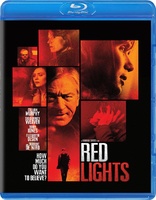
Movie rating
6.2 | / 10 |
Blu-ray rating
| Users | 0.0 | |
| Reviewer | 3.0 | |
| Overall | 3.0 |
Overview
Red Lights (2012)
Psychologist Margaret Matheson and her assistant study paranormal activity, which leads them to investigate a world-renowned psychic.
Starring: Cillian Murphy, Sigourney Weaver, Toby Jones, Elizabeth Olsen, Robert De NiroDirector: Rodrigo Cortés (I)
| Thriller | Uncertain |
| Mystery | Uncertain |
| Drama | Uncertain |
Specifications
Video
Video codec: MPEG-4 AVC
Video resolution: 1080p
Aspect ratio: 2.35:1
Original aspect ratio: 2.39:1
Audio
English: Dolby TrueHD 5.1 (48kHz, 16-bit)
English: Dolby Digital 2.0 (192 kbps)
Subtitles
English SDH, Spanish
Discs
25GB Blu-ray Disc
Single disc (1 BD)
Packaging
Slipcover in original pressing
Playback
Region A (C untested)
Review
Rating summary
| Movie | 3.0 | |
| Video | 4.0 | |
| Audio | 4.0 | |
| Extras | 1.5 | |
| Overall | 3.0 |
Red Lights Blu-ray Movie Review
Stop, Look, Listen, Close Your Eyes and Repeat
Reviewed by Michael Reuben October 13, 2012It's hard to believe that nineteen years have passed since The X-Files first appeared on TV, but fans who remember its initial blast of chilly dislocation may appreciate what writer-director Rodrigo Cortés (Buried) attempted in Red Lights and, at moments, achieved. Like Chris Carter's influential series, Cortés' film is set in a parallel universe that resembles our own just enough to make its dramatic interplay between belief and skepticism compelling, but not so much as to interfere with the suspension of disbelief. Carter's FBI barely resembled the real one, and Cortés' version of academia, law enforcement and scam artists doesn't stand up to scrutiny either, but that's beside the point. Neither Carter nor Cortés was interested in realism. The film's title refers to "discordant notes"—warning signs, giveaways, inconsistencies—that alert the paranormal debunker played by Sigourney Weaver to the con behind whatever psychic phenomena she's been asked to investigate. Appropriately enough, the film's visual texture is full of visual "red lights" (figuratively, not literally) that its world isn't to be taken too seriously. First and foremost is the distancing effect familiar from The X-Files and countless other thrillers, when Canadian exteriors are used to substitute for a quintessentially American location (here, Columbus, Ohio) so that everything is "off" and nothing looks quite right. Cortés and his cinematographer, Xavi Giménez (The Machinist, Transsiberian), add to this effect with stylized photography, an almost gothic use of shadow and the frequent deployment of video screens and shots through cameras. It's as if Cortés is doing everything possible to undercut the realistic illusion of cinema and convert the screen into a giant stage on which a morality play about faith and illusion can play itself out. Does it work? Not entirely. The script for Red Lights isn't grand enough to justify so much artifice, despite the efforts of an A-list cast that includes, in addition to Weaver, Robert De Niro, Cillian Murphy, Toby Jones, Joely Richardson and rising star Elizabeth Olsen. The cast keeps things interesting, but in the end Cortés hasn't achieved anything more than an overdressed genre tale that barely scratches the surface of the more profound questions of faith he clearly wanted to explore.
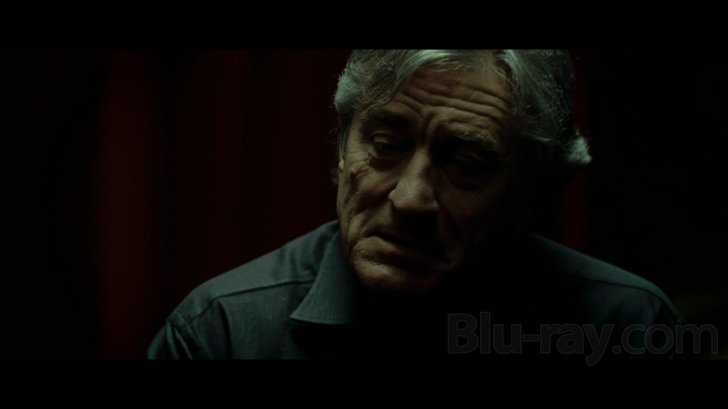
Drs. Margaret Matheson (Weaver) and Tom Buckley (Murphy) work out of a small and underfunded department at Columbus University, from which they investigate suspected paranormal activity and people who claim to be mediums or psychics. With one exception, Matheson has never encountered a situation she couldn't explain or expose as a fraud. Murphy, who has a degree in physics from M.I.T., is her "hard science" assistant. Their rival is Dr. Paul Shackleton (Jones), whose generously funded department is devoted to documenting the existence of extrasensory perception, clairvoyance, telekinesis and all of the other "fringe" phenomena that Dr. Matheson doubts. If Dan Ackroyd's Ray Stantz from Ghostbusters had ever achieved academic credibility, he'd be Shackleton. Matheson, though, has a low opinion of her colleague, who she thinks is so eager to find ESP that he cuts corners—and she doesn't hesitate to show him up in front of his subordinates. Their rivalry isn't a friendly one. (Posters at IMDb have mocked the plot device that has Shackleton's department getting more funding than Matheson's, but it's not much of a stretch if you have any experience with university politics.) Buckley could get a much better job doing straightforward physics, and Matheson tells him so, but, like Matheson, Buckley has personal motivations for doing this unusual work. In Buckley's case, it goes back to a relative who was persuaded by a faith healer not to seek treatment for a deadly illness. In Matheson's, it goes back to her son, who fell into a coma when he was a teenager and has been kept alive by machines for many years. Matheson can't bear to pull the plug. Her son's condition, in turn, is bound up with the one psychic she failed to debunk, a reclusive blind man named Simon Silver (De Niro), who has just announced a return to public life after many years in seclusion. A showman and faith healer with a cult-like following, Silver sells out huge auditoriums with his performances, as he is shepherded around by his protective publicist, Monica Handsen (Richardson). Matheson is afraid of Silver, but Buckley insists that they go after him. Eventually they do, having recruited a student from their class, Sally Owen (Olsen), as an assistant. Their inquiries into Silver unleash all manner of strange forces, some mysterious (Buckley's equipment goes berserk at a key moment), and some old-fashioned (Silver has thugs protecting him). A visit to an imprisoned con man named Palladino (Leonardo Sbaraglia), who "trained" with Silver and whom Matheson helped expose as a phony psychic, proves unilluminating. But the real shock comes when Silver announces that he's agreed to be "tested" by Shackleton's group under rigorously controlled scientific conditions. If he passes these tests, he'll receive scientific validation from a major university that will enhance both his credibility and his already considerable public profile. The need to expose him (if indeed he is a fraud) has never been more urgent. Red Lights has a number of "reveals" along the way, and some of them are easy to anticipate (maybe all of them, depending on one's personal propensity for second-guessing movie plots). There's a school of "criticism" that finds a film flawed when you can see a plot development coming, but I don't subscribe to it. The earliest known form of western drama, Greek tragedy, relied on the audience's knowledge of the story's end. In modern times, Alfred Hitchcock insisted that true suspense results from giving the audience more information than the characters. Red Lights follows this directive by planting clues about major events to come—"red lights", as it were, that something is awry in the current picture we're seeing. Viewers who pick up on these signals are simply following the film's narrative design, not finding its flaws. What undoes Red Lights is the same limitation that ultimately took down The X-Files, which is that by the time you unravel all the artifice and mystery, there turns out to be not much there. The poster on Buckley's wall may have changed from Agent Mulder's "I Want to Believe" to the more rational "I Want to Understand", but Red Lights doesn't contribute any understanding. The status quo is the same at the end as at the beginning: Most paranormal phenomena have ordinary explanations, nearly all psychics and mediums are frauds, and people suffering physically or emotionally make easy marks. Every so often, something occurs that defies scientific analysis, but you won't find answers in a media circus.
Red Lights Blu-ray Movie, Video Quality 
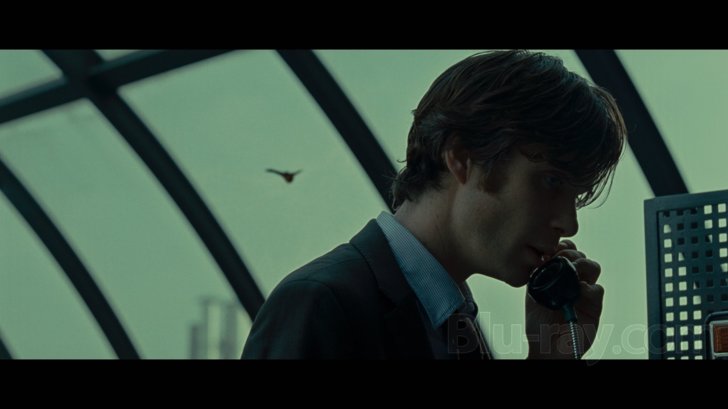
Cinematographer Xavi Giménez created a stylized, deliberate and composed look for Red Lights, making noteworthy use of shadow and darkness, especially for scenes involving Robert De Niro's Simon Silver. The critical element of Giménez's work is deep black, which is well represented on Millennium Media's 1080p, AVC-encoded Blu-ray. Shot on film and finished on a digital intermediate, Red Lights' presentation on Blu-ray is clean, fine-grained and noiseless, with detail retained even in areas of dark shadow. Colors are generally muted, in keeping with the "haunted" atmosphere and the generally disconsolate mood of Matheson and Buckley. (Giménez also says in the extras that he was following the style of American political thrillers of the Seventies, which is an interesting choice.) Compression errors were not in evidence, nor was there any indication of detail filtering or artificial sharpening.
Red Lights Blu-ray Movie, Audio Quality 
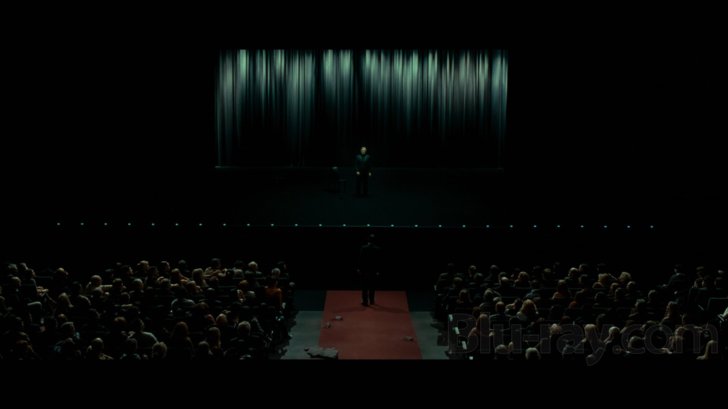
The sound mix in Red Lights' Dolby TrueHD 5.1 track isn't bombastic, but it will certainly let you know that you have a 5.1 speaker array. Director Cortés isn't one of those filmmakers who's concerned that off-camera noises will distract the viewer from the screen. He's perfectly happy to let sound designers place voices—real voices attached to human presence—in one or other surround, along with the bangs and crashes of a possible poltergeist and other potentially spectral events. The ambiance of locales like the university or the hospital where Matheson's son remains in a coma is effectively established, and the foreboding score by Victor Reyes (who also scored Buried) provides an unsettling undercurrent. Dialogue is always clear.
Red Lights Blu-ray Movie, Special Features and Extras 
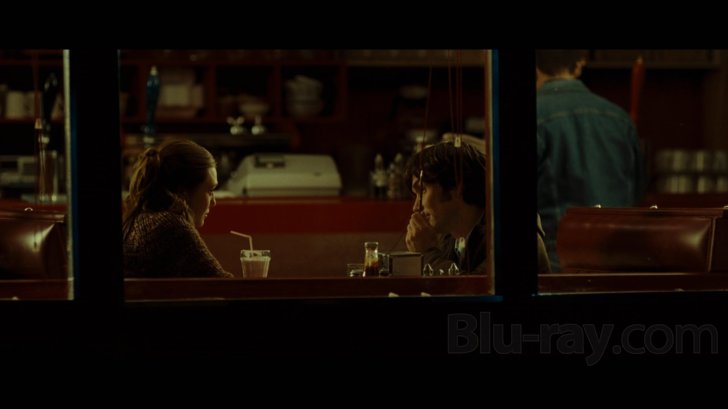
- Cast Interviews (HD, 1080p; 1.78:1; 11:27): The interviewees are Weaver, Murphy, De Niro and Olsen. Unfortunately, their comments about their characters don't go any deeper than what any viewer can already observe by watching the film, and their comments about the director are the usual praise that one expects from actors promoting a film.
- Director's Interview (HD, 1080p; 1.78:1; 5:40): Speaking in heavily accented English, Cortés describes the film as a clash between magic and science. He also discusses his visual strategies and his casting decisions.
- Making of Red Lights (HD, 1080p; 1.78:1; 10:41): A slickly produced but ultimately shallow EPK with interviews and behind-the-scenes footage. Here, Cortés speaks in Spanish, with (non-switchable) English subtitles. Weaver, Murphy and De Niro are interviewed in English.
- Behind the Scenes (HD, 1080p; 1.78:1; 1:47): Three short clips of Cortés directing.
- Previews: At startup the disc plays trailers (at 1080p) for The Babymakers, Intruders and The Paperboy. These are available from the main menu under "Previews", along with a trailer for Red Lights (HD, 1080p; 2.35:1, enhanced; 2:30).
Red Lights Blu-ray Movie, Overall Score and Recommendation 

As a stylish genre exercise with a better-than-average cast, Red Lights is well worth watching, but Cortés makes it clear in the extras that he intended something more. He wanted the film to challenge the very concept of perception in the way that, e.g., The Usual Suspects challenges the concept of narrative reliability. On that score, the film falls short, never getting beyond the basic notion of magician's misdirection, which Murphy's Dr. Buckley explains to their student, Sally, in a coffee shop booth. As long as you have the right expectations, the Blu-ray is recommended.
Similar titles
Similar titles you might also like

The Killing Room
Experiment Killing Room
2009

Dream House
2011

Exposed
2016

Shutter Island 4K
10th Anniversary Edition
2010

Edge of Darkness
2010

Spinning Man
2018

Irresistible
Slipcover in Original Pressing
2006

Black Butterfly
2017

The Captive
2014

The Number 23
2007

Solace
2015

Gone
2012

Perfect Stranger
2007

Taking Lives
Extended Cut
2004

The Girl on the Train 4K
2016

Aftermath
2017

Identity
2003

Trespass
2011

Buried
DVD Packaging
2010

Dark Places
2015
